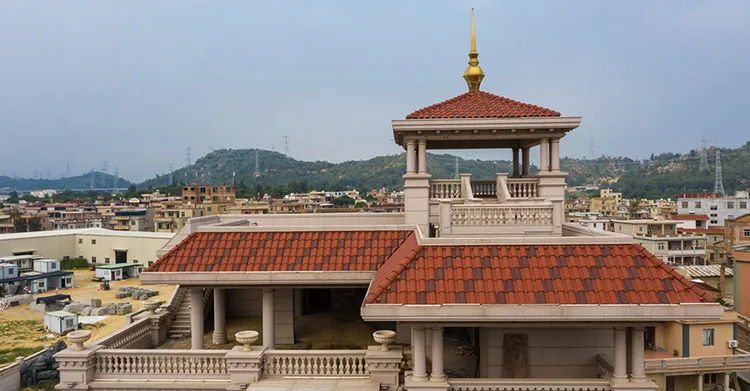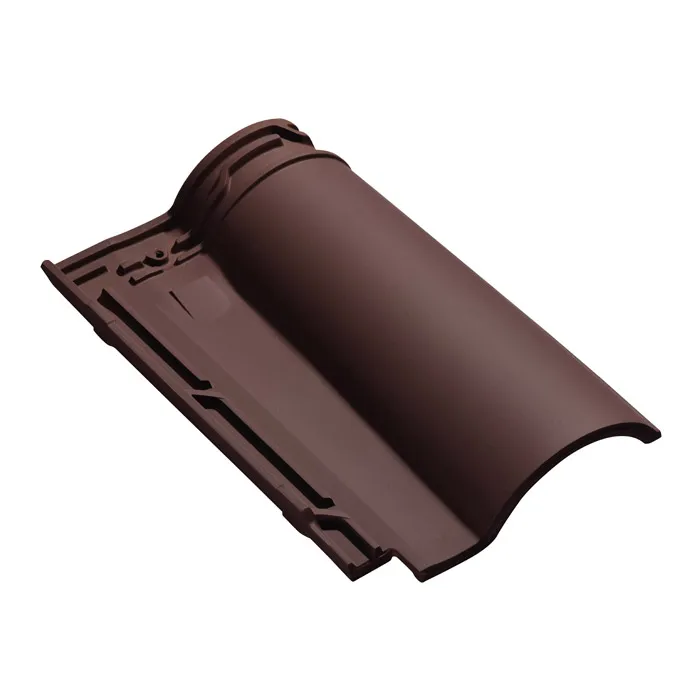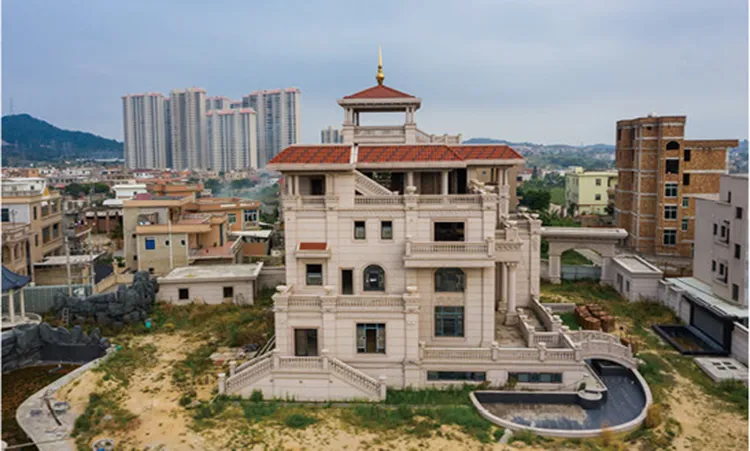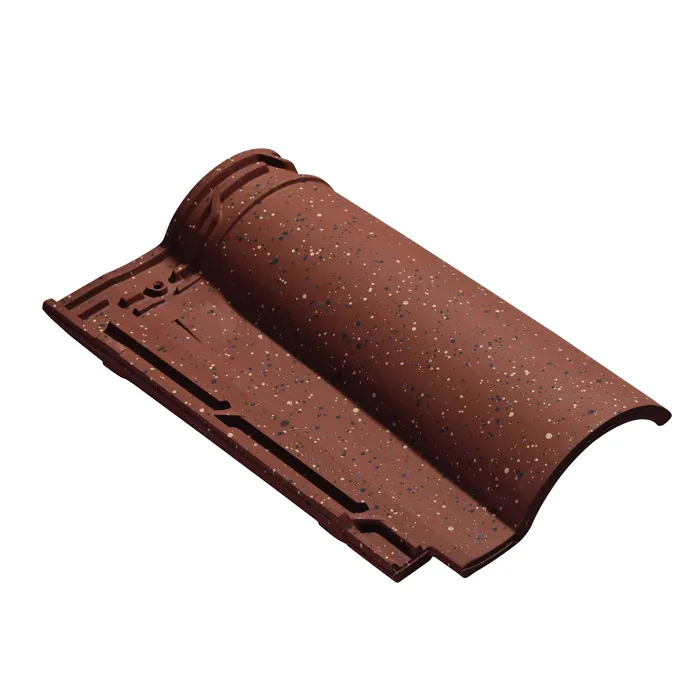Roman clay roof tiles are a great choice for many homes because of their classic beauty and excellent durability. This traditional material not only adds a sense of history and visual appeal to a home, but is also highly regarded for its excellent insulation and longevity. However, over time, many homeowners have noticed that black stains have gradually appeared on their Roman clay roof tiles, which not only affects the appearance of the roof, but also makes people worry about the potential problems it may cause.
What exactly are these black stains? Can they cause damage to the structure and function of the roof? This article will take a deep look at the causes of black stains, how to identify these stains, and how to deal with and clean these stubborn stains.

What are black stains on Roman clay roof tiles?
It is not uncommon to see black stains on Roman clay tile roofs. These stains are usually formed due to the roof being exposed to the outside environment for a long time and being affected by a variety of natural factors. The main causes include mold, algae, air pollutants, etc., which work together to cause the accumulation of black or dark stains.
1. Mold and fungi
Mold and fungi are one of the common causes of black stains on roofs. Mold and fungi can multiply rapidly, especially in moist, dark environments. They usually grow on the porous surface of clay tiles, absorbing moisture and organic matter from the air.
The most common types of mold are Alternaria and Aspergillus niger, which are particularly active in moist environments. Because the surface of Roman clay tiles can absorb moisture, and the gaps between tiles sometimes accumulate water, mold can easily multiply and leave black spots on the surface of the tiles. Although these molds themselves do not damage the structure of the tiles, their presence affects the appearance of the tiles, making them look old and worn.
2. Blue-green algae
Another common source of black stains is algae, especially blue-green algae (Gloeocapsa magma). This microorganism is one of the main causes of black or dark streaks on roofs. Blue-green algae is a microorganism that is capable of photosynthesis and usually grows in moist and warm environments. Over time, these algae can spread over the surface of clay tiles, forming black or dark brown patches, especially in areas with heavy rainfall or high humidity.
Blue-green algae are primarily airborne, and once attached to the roof, they absorb moisture from rainwater and obtain nutrients through photosynthesis. This algae not only affects the aesthetics, but over time, it can also damage the surface structure of the tiles, especially if they are not cleaned in a timely manner.
3. Pollutants and impurities in the air
In addition to mold and algae, airborne pollutants are also one of the sources of black stains on Roman clay tiles. Especially in urban areas or industrialized areas, there are a large number of tiny particles suspended in the air, such as dust, soot, and pollutants from car exhaust. These particles will be attached to the surface of the roof by the wind, especially on the surface of clay tiles, which are easily captured and adsorbed due to their porosity.
Over time, these airborne pollutants will gradually accumulate, causing black or dark stains on the surface of the tiles. Although these pollutants do not cause direct damage to the structure of the tiles, they will greatly reduce the aesthetics of the roof and may accelerate the growth of other organisms such as algae and mold.
4. Acidic effects of rainwater
Air pollution can also lead to the formation of acid rain. Acid rain refers to rainwater that is highly acidic when it falls due to pollutants such as sulfur dioxide and nitrogen oxides in the air. The long-term impact of this acidic rain on building materials, especially roof tiles, cannot be ignored.
The acidic substances in acid rain will react chemically with the surface of clay tiles, causing the tiles to change color and form dark stains. Although acid rain is relatively less destructive to clay tiles, if they are not cleaned for a long time, the stains will gradually accumulate and form more obvious black marks.

How to identify different types of black stains on clay tiles?
Understanding the different causes of black stains can help us better identify them. Depending on the nature of the stain, different cleaning methods can be used to deal with it. Here are some ways to identify the sources of different stains:
1. Observe the humidity environment: If you are in an area with high humidity and black stains appear first in the shaded part or more humid areas of the roof, then these stains are likely caused by mold or algae. Mold and algae like to grow in moist, warm environments, so they usually grow faster in the summer or humid seasons.
2. Check the source of pollution: If your house is close to an industrial area, a busy highway, or other place where air pollution may be generated, the black stains on the roof may mainly come from pollutants in the air. By observing the location of the pollution source and the distribution of stains on the tiles, you can preliminarily determine the source of these stains.
3. Confirm the impact of acid rain: If you live in an area that is affected by acid rain all year round, the color changes and black stains on the surface of the tiles may be related to acid rain. Acid rain corrodes clay tiles slowly, but over time, the erosion of acidic substances will cause the color of the tiles to darken and black stains to appear.
What effect does black stains have on roof tiles?
Although black stains themselves will not immediately damage the structure of roof tiles, they can still cause a series of indirect problems, especially when the roof has not been cleaned and maintained for a long time.
1. Reduce the appearance of the roof: The most obvious effect of black stains is that they destroy the appearance of the roof. Roman clay tiles are loved for their unique hues and designs, but when black stains cover the surface of the roof, the originally bright tiles will become dull and even look old and damaged. This is undoubtedly a big annoyance for homeowners who pay attention to appearance.
2. Increased difficulty in roof maintenance: The appearance of black stains may mean that the roof has been exposed to adverse conditions for a long time and lacks necessary maintenance and cleaning. If not cleaned in time, these stains may accelerate the growth of other organisms such as moss. The roots of moss will penetrate the gaps in the tiles, further damaging the structure of the tiles and causing the waterproof performance of the roof to decrease.
3. Increased risk of tile damage: Although black stains themselves will not directly cause tiles to break, if these stains are caused by mold, algae or acid rain, they may weaken the surface structure of the tiles. Long-term erosion and neglect of cleaning will cause tiles to become fragile and more likely to break or damage in extreme weather conditions.

How to clean black stains on clay tiles?
For black stains on Roman clay tiles, it is crucial to take appropriate cleaning measures and maintenance strategies. Here are some common treatment methods:
1. Use professional cleaners: There are cleaners on the market that are specifically designed for mold, algae, and stains. These cleaners usually contain antibacterial ingredients that can effectively remove black stains on the surface of clay tiles and prevent their regrowth. When using cleaners, make sure to choose products that are non-corrosive to clay tiles to avoid further damage to the structure of the tiles.
2. Manual cleaning: For small black stains, you can use a soft-bristled brush or sponge for manual cleaning. Although manual cleaning is time-consuming, it is a safer cleaning method for homeowners who are worried about high-pressure water jets or chemical cleaners damaging tiles. Manual cleaning can control the force and avoid causing additional damage to the tiles.
3. Regular maintenance: It is very important to keep the roof regularly maintained. Regular cleaning can not only effectively prevent the accumulation of mold, algae and pollutants, but also extend the service life of Roman clay tiles. A comprehensive inspection of the roof every once in a while to detect and remove stains in time is the key to maintaining the beauty and functionality of the roof.
4. Avoid high-pressure water cleaning: Although high-pressure water cleaning can quickly remove stains, it may be counterproductive for clay tiles. High-pressure water flow can easily cause tiles to shift, crack, and even affect the overall structure of the roof. Therefore, if you decide to use water flow cleaning, it is recommended to choose low-pressure water flow or hire experienced professionals to operate it.
With decades of expertise in the building materials industry, Rongguan has become a leading supplier of artificial marble, quartz stone, and terrazzo products. Our commitment to quality is backed by ISO9001:2015 certification, ensuring that every product is durable, aesthetically pleasing, and competitively priced. Whether you're looking for a reliable manufacturer for wholesale orders or need customized solutions for a specific project, Rongguan offers attractive discounts, professional services, and global shipping to meet your needs.


